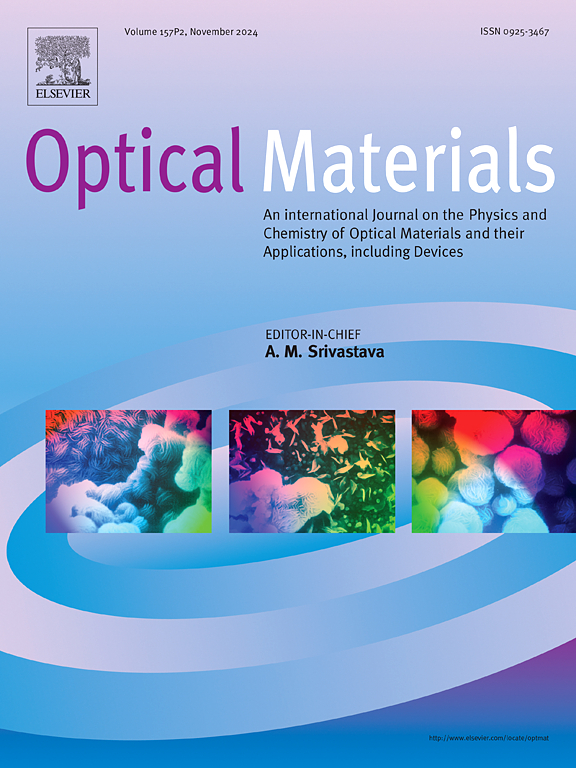Light selective reflection asymmetry in cholesteric layer with planar–conical anchoring
IF 3.8
3区 材料科学
Q2 MATERIALS SCIENCE, MULTIDISCIPLINARY
引用次数: 0
Abstract
The orientational structure and spectral properties of a cholesteric layer with planar–conical boundary conditions are studied. Initially, a structure with circular-shaped domains characterized by double twisting of the surface linear defect is formed. Under the influence of an electric field, the domains take the shape of polygons. This system has an asymmetric selective reflection of light: the reflection of right-circularly polarized light close to 100% is observed at a normal incidence of radiation on the sample from the planar boundary conditions, while a selective reflection of light does not occur for radiation incident from the conical anchoring. The light transmission of the sample in the forward direction does not depend on which substrate the radiation falls on. This spectral behaviour is due to the peculiarity of the formation of the domain structure in the cholesteric layer, in which the circular domains are initially located only near the substrate with a conical anchoring. A practically uniform planar cholesteric structure is formed near another substrate with planar boundary conditions. The selective reflection asymmetry is reduced by an applied voltage in the range of 0 to 12 V. The cholesteric transforms into a scattering state at an applied voltage of 12 V V and becomes a transparent at V. Switching off the electric field, under the influence of which the cholesteric is in a transparent state, leads to the restoration of the asymmetry of selective light reflection.

求助全文
约1分钟内获得全文
求助全文
来源期刊

Optical Materials
工程技术-材料科学:综合
CiteScore
6.60
自引率
12.80%
发文量
1265
审稿时长
38 days
期刊介绍:
Optical Materials has an open access mirror journal Optical Materials: X, sharing the same aims and scope, editorial team, submission system and rigorous peer review.
The purpose of Optical Materials is to provide a means of communication and technology transfer between researchers who are interested in materials for potential device applications. The journal publishes original papers and review articles on the design, synthesis, characterisation and applications of optical materials.
OPTICAL MATERIALS focuses on:
• Optical Properties of Material Systems;
• The Materials Aspects of Optical Phenomena;
• The Materials Aspects of Devices and Applications.
Authors can submit separate research elements describing their data to Data in Brief and methods to Methods X.
 求助内容:
求助内容: 应助结果提醒方式:
应助结果提醒方式:


